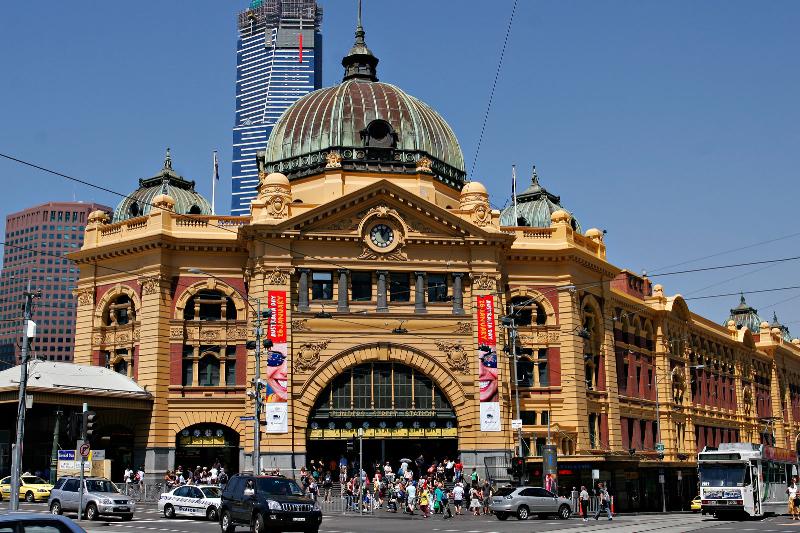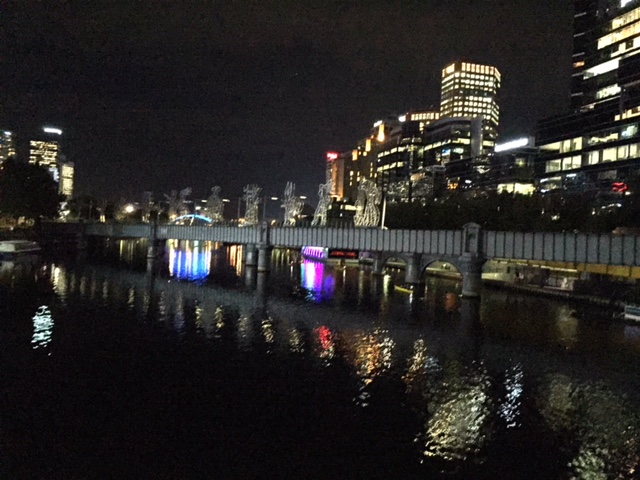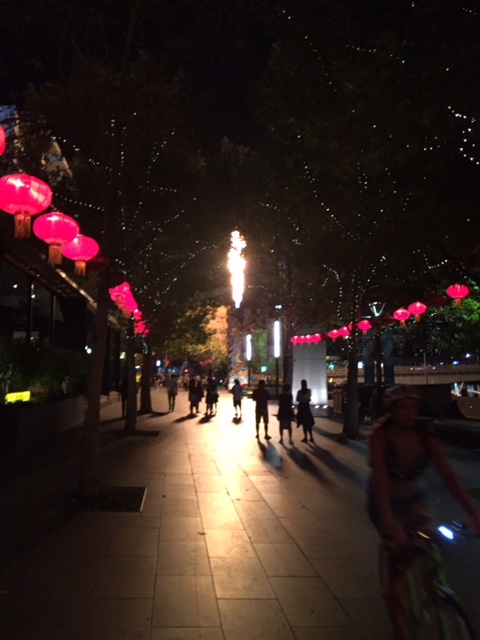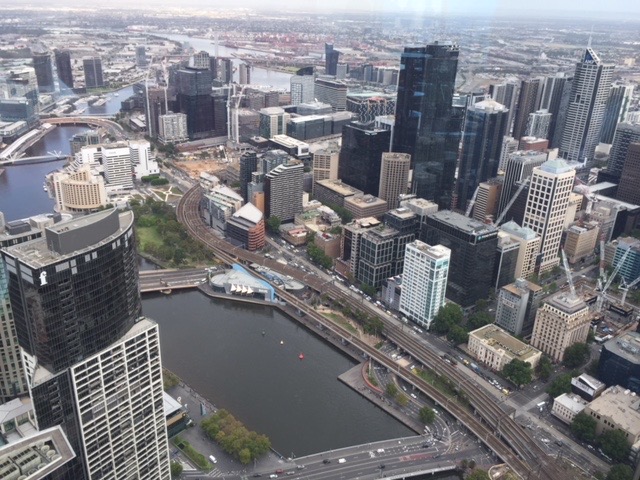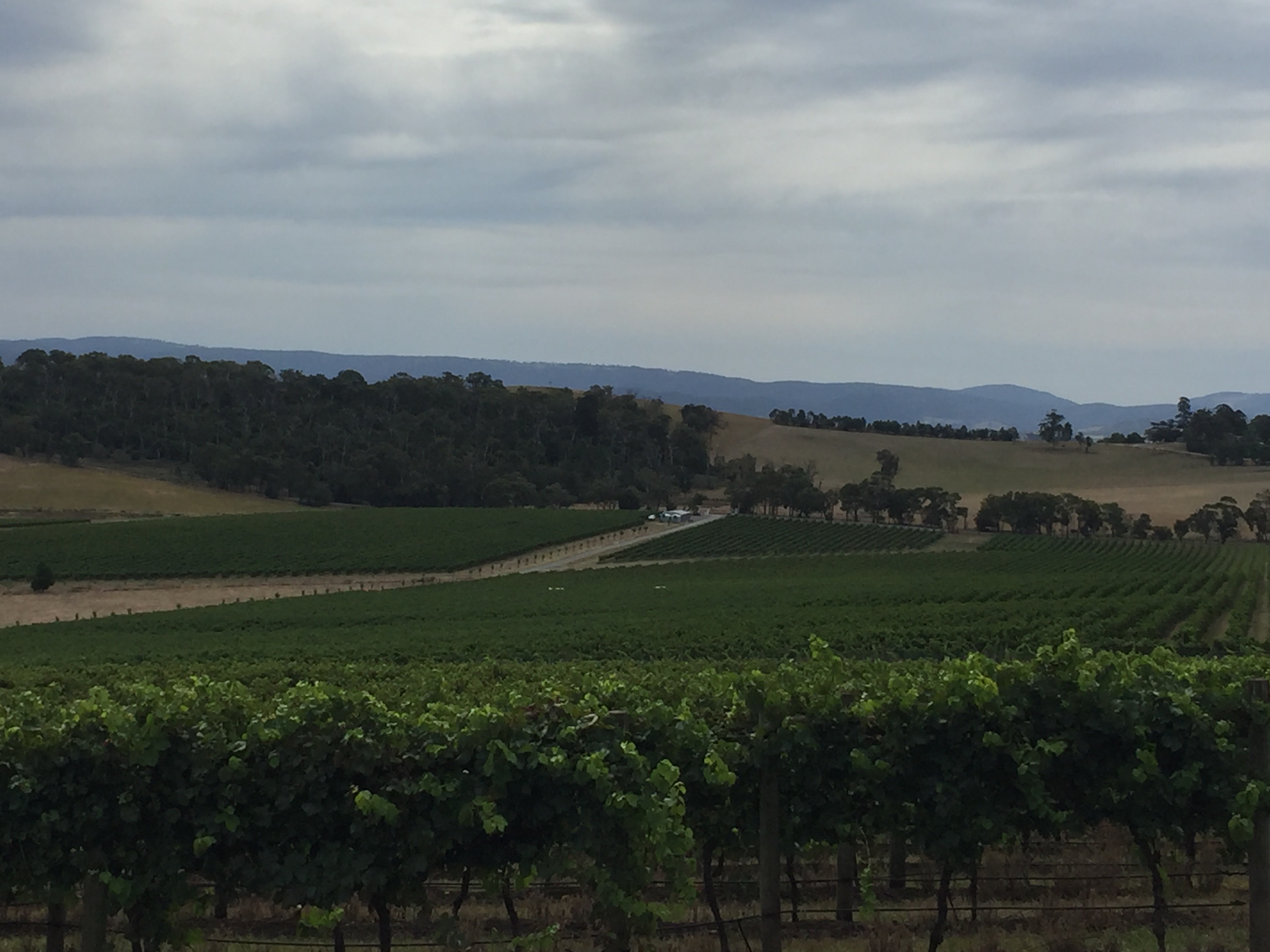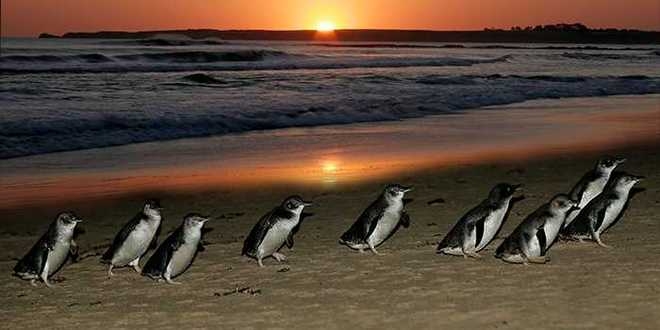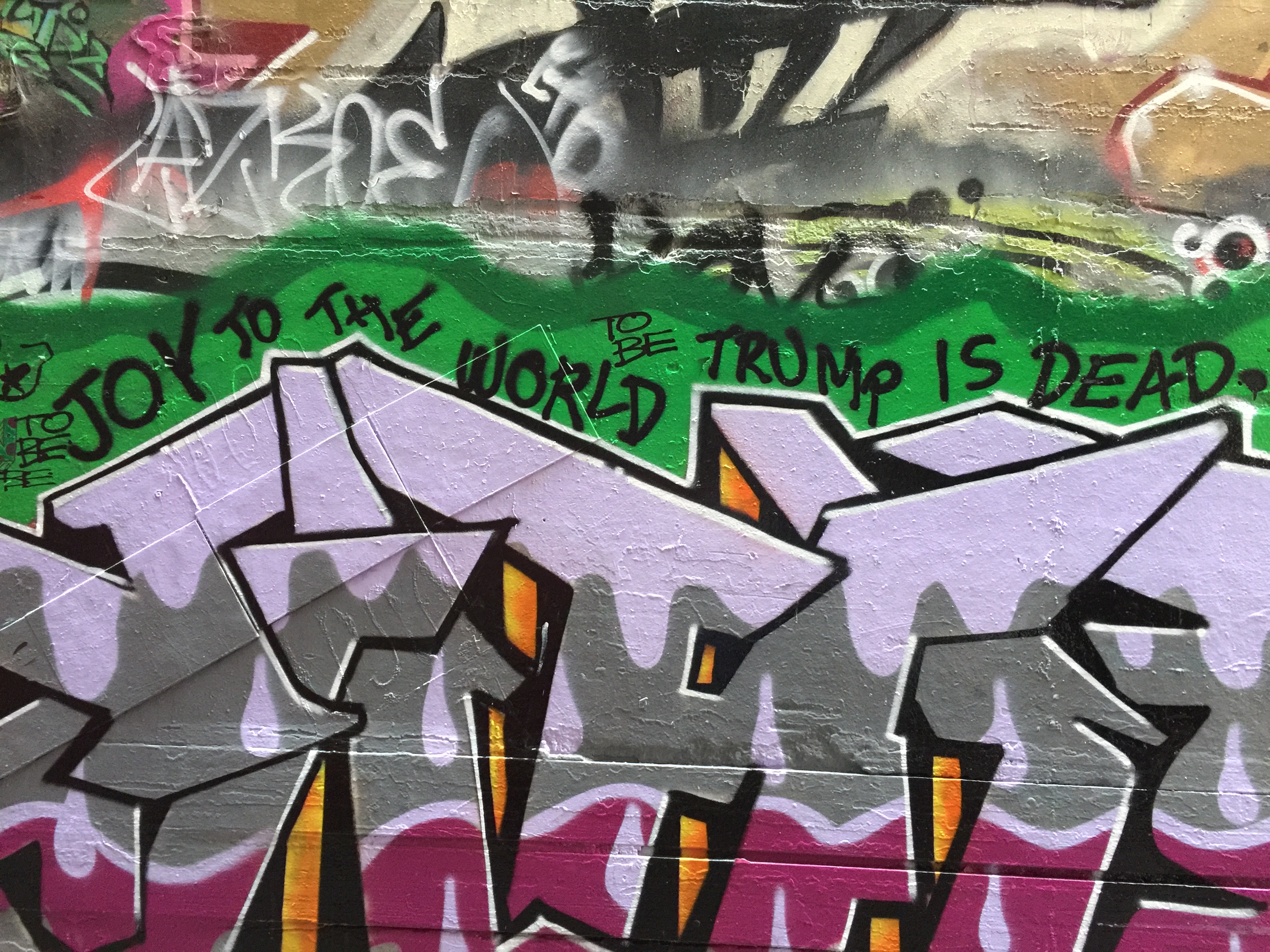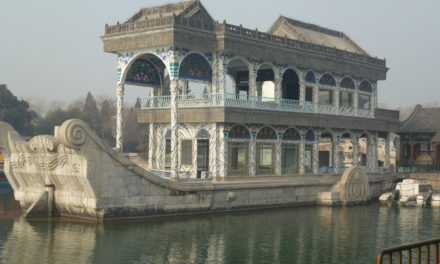Our hotel in Melbourne, the Crown Metropol, was connected to a gigantic shopping mall and casino that looks like Las Vegas on steroids.
The mall is filled with hundreds of luxury brand stores, gourmet restaurants and specialty shops. The casino, the largest in the Southern Hemisphere, has 2,500 slot machines and more than 500 tables for poker and other games. I was sorely tempted, but Pat reminded me that there were better ways to spend money in Australia.
On the promenade outside the casino, eight towers shoot up flames every night on the hour. Known as the “Gas Brigades,’’ the intense heat from the fireballs can stun you if you’re not prepared for them.
On our first full day in Melbourne, Pat and I did a wine tour of the Yarra Valley, about an hour’s drive east of the city. We visited five wineries, ranging from the 600-acre, state-of-the-art De Bortoli vineyard to Yering Farm, a small, rustic winery that also makes a hard apple cider (quirkily spelled “syder’’).
Each place served a half-dozen wine samples, so I was sloshed halfway through the tour despite a heavy intake of cheese and crackers. I don’t know how professional wine tasters do it because, by my third Chardonnay, Pinot Noir or Merlot, they all taste the same to me.
One of the wineries, the Helen & Joey Estate, is owned by a Chinese couple who started selling vino in 2012. The vineyard’s symbol is a unicorn, chosen because Helen was born in China’s Year of the Horse. I got to meet Helen, a charming host who is so diminutive that I had to kneel next to her while someone took our photograph.
Many of the grape vines in the Yarra Valley were covered with nets to protect them from kangaroos and birds. One group of kangaroos we spotted included a couple of albinos, which are extremely rare. Albino kangaroos usually have a short lifespan because their pale skin makes them more vulnerable to predators and cancer, and their genetic makeup can cause vision and hearing problems.
The following day we did a van tour of Melbourne that passed by the sports complex where the Australian Open is played. I covered the tennis tournament for The Associated Press in 1989, the second year that it was held at what is now called Melbourne Park. The venue has been greatly expanded and improved since then, becoming the first Grand Slam tournament with three retractable roofs that permit play during rain and extreme heat.
Another Melbourne landmark is the recently restored Flinders Street rail station, an Edwardian Baroque building that opened in 1910. It’s known for its massive copper dome and row of clocks under its arched entrance (giving the times of departing trains), which inspired the local saying, “I’ll meet you under the clocks.’’
Melbourne has officially designated graffiti alleys, where approved artists can paint on the walls. Our favorite graffiti sign read: “Joy To The World. Trump Is Dead.’’
Pat and I went to the top of the 975-foot high Eureka Skydeck 88, which bills itself as the highest viewing platform in the Southern Hemisphere. The views were impressive, but I must admit I’ve become jaded about skyscraper observation decks after visiting the 1,800-foot-plus ones in Dubai and Shanghai.
Later, we went to see the famous penguin parade at Phillip Island, a 90-minute drive from Melbourne. Every evening hundreds (sometimes thousands) of Little Penguins – the smallest species of the flightless bird – emerge from the sea at dusk to return to their nests. The blue-and-white penguins have a built-in GPS that allows them to find the same nest every time after spending days, or sometimes, weeks at sea searching for food. Some penguins nest close to the shore, while others waddle up to a mile to feed their chicks.
Most visitors watch the parade from a large grandstand near the water, but we paid extra to get a spot on a small platform with a better view. The birds start coming out of the water at dusk and continue their procession for several hours. Some of them quickly climb up a hill to their nests, while others take long rest breaks on the shore before heading home. Most of them nest in natural burrows, but some use man-made wooden boxes.
The penguin parade is a huge tourist attraction, held every day of the year. When you’re leaving, it feels a little like exiting Yankee Stadium at the end of a sold-out game.
On our way to see the penguins, we made a brief stop on tiny Churchill Island, which is connected by a bridge to Phillip Island. Churchill Island is a nature preserve that contains a working farm where we met Dolly the Pig, a clever hog who sits, stays and eats on command. Our guide fed her leftover pizza, which she gobbled with delight. I got the feeling, however, that she would eat almost anything.
Next stop: Queenstown, New Zealand.
